MODELLING
TRANSPORT
Contents
About the Authors
Preface
1 Introduction
1.1 Transport Planning and Modelling
1.1.1 Background
1.1.2 Models and their Role
1.2 Characteristics of Transport Problems
1.2.1 Characteristics of Transport Demand
1.2.2 Characteristics of Transport Supply
1.2.3 Equilibration of Supply and Demand
1.3 Modelling and Decision Making
1.3.1 Decision-making Styles
1.3.2 Choosing Modelling Approaches
1.4 Issues in Transport Modelling
1.4.1 General Modelling Issues
1.4.2 Aggregate and Disaggregate Modelling
1.4.3 Cross-section and Time Series
1.4.4 Revealed and Stated Preferences
1.5 The Structure of the Classic Transport Model
1.6 Continuous Transport Planning
1.7 Theoretical Basis Versus Expedience
2 Mathematical Prerequisites
2.1 Introduction
2.2 Algebra and Functions
2.2.1 Introduction
2.2.2 Functions and Graphs
2.2.3 Sums of Series
2.3 Matrix Algebra
2.3.1 Introduction
2.3.2 Basic Operations of Matrix Algebra
2.4 Elements of Calculus
2.4.1 Differentiation
2.4.2 Integration
2.4.3 The Logarithmic and Exponential Functions
2.4.4 Finding Maximum and Minimum Values of Functions
2.4.5 Functions of More Than One Variable
2.4.6 Multiple Integration
2.4.7 Elasticities
2.4.8 Series Expansions
2.5 Elementary Mathematical Statistics
2.5.1 Probabilities
2.5.2 Random Variables
2.5.3 Moments around Zero
2.5.4 More Advanced Statistical Concepts
3 Data and Space
3.1 Basic Sampling Theory
3.1.1 Statistical Considerations
3.1.2 Conceptualisation of the Sampling Problem
3.1.3 Practical Considerations in Sampling
3.2 Errors in Modelling and Forecasting
3.2.1 Different Types of Error
3.2.2 The Model Complexity/Data Accuracy Trade-off
3.3 Basic Data-Collection Methods
3.3.1 Practical Considerations
3.3.2 Types of Surveys
3.3.3 Survey Data Correction, Expansion and Validation
3.3.4 Longitudinal Data Collection
3.3.5 Travel Time Surveys
3.4 Stated Preference Surveys
3.4.1 Introduction
3.4.2 The Survey Process
3.4.3 Case Study Example
3.5 Network and Zoning Systems
3.5.1 Zoning Design
3.5.2 Network Representation
Exercises
4 Trip Generation Modelling
4.1 Introduction
4.1.1 Some Basic Definitions
4.1.2 Characterisation of Journeys
4.1.3 Factors Affecting Trip Generation
4.1.4 Growth-factor Modelling
4.2 Regression Analysis
4.2.1 The Linear Regression Model
4.2.2 Zonal-based Multiple Regression
4.2.3 Household-based Regression
4.2.4 The Problem of Non-Linearity
4.2.5 Obtaining Zonal Totals
4.2.6 Matching Generations and Attractions
4.3 Cross-Classification or Category Analysis
4.3.1 The Classical Model
4.3.2 Improvements to the Basic Model
4.3.3 The Person-category Approach
4.4 Trip Generation and Accessibility
4.5 The Frequency Choice Logit Model
4.6 Forecasting Variables in Trip Generation Analysis
4.7 Stability and Updating of Trip Generation Parameters
4.7.1 Temporal Stability
4.7.2 Geographic Stability
4.7.3 Bayesian Updating of Trip Generation Parameters
Exercises
5 Trip Distribution Modelling
5.1 Definitions and Notation
5.2 Growth-Factor Methods
5.2.1 Uniform Growth Factor
5.2.2 Singly Constrained Growth-Factor Methods
5.2.3 Doubly Constrained Growth Factors
5.2.4 Advantages and Limitations of Growth-Factor Methods
5.3 Synthetic or Gravity Models
5.3.1 The Gravity Distribution Model
5.3.2 Singly and Doubly Constrained Models
5.4 The Entropy-Maximising Approach
5.4.1 Entropy and Model Generation
5.4.2 Generation of the Gravity Model
5.4.3 Properties of the Gravity Model
5.4.4 Production/Attraction Format
5.4.5 Segmentation
5.5 Calibration of Gravity Models
5.5.1 Calibration and Validation
5.5.2 Calibration Techniques
5.6 The Tri-proportional Approach
5.6.1 Bi-proportional Fitting
5.6.2 A Tri-proportional Problem
5.6.3 Partial Matrix Techniques
5.7 Other Synthetic Models
5.7.1 Generalisations of the Gravity Model
5.7.2 Intervening Opportunities Model
5.7.3 Disaggregate Approaches
5.8 Practical Considerations
5.8.1 Sparse Matrices
5.8.2 Treatment of External Zones
5.8.3 Intra-zonal Trips
5.8.4 Journey Purposes
5.8.5 K Factors
5.8.6 Errors in Modelling
5.8.7 The Stability of Trip Matrices
Exercises
6 Modal Split and Direct Demand Models
6.1 Introduction
6.2 Factors Influencing the Choice of Mode
6.3 Trip-end Modal-split Models
6.4 Trip Interchange Heuristics Modal-split Models
6.5 Synthetic Models
6.5.1 Distribution and Modal-split Models
6.5.2 Distribution and Modal-split Structures
6.5.3 Multimodal-split Models
6.5.4 Calibration of Binary Logit Models
6.5.5 Calibration of Hierarchical Modal-split Models
6.6 Direct Demand Models
6.6.1 Introduction
6.6.2 Direct Demand Models
6.6.3 An Update on Direct Demand Modelling
Exercises
7 Discrete Choice Models
7.1 General Considerations
7.2 Theoretical Framework
7.3 The Multinomial Logit Model (MNL)
7.3.1 Specification Searches
7.3.2 Universal Choice Set Specification
7.3.3 Some Properties of the MNL
7.4 The Nested Logit Model (NL)
7.4.1 Correlation and Model Structure
7.4.2 Fundamentals of Nested Logit Modelling
7.4.3 The NL in Practice
7.4.4 Controversies about some Properties of the NL Model
7.5 The Multinomial Probit Model
7.5.1 The Binary Probit Model
7.5.2 Multinomial Probit and Taste Variations
7.5.3 Comparing Independent Probit and Logit Models
7.6 The Mixed Logit Model
7.6.1 Model Formulation
7.6.2 Model Specifications
7.6.3 Identification Problems
7.7 Other Choice Models and Paradigms
7.7.1 Other Choice Models
7.7.2 Choice by Elimination and Satisfaction
7.7.3 Habit and Hysteresis
7.7.4 Modelling with Panel Data
7.7.5 Hybrid Choice Models Incorporating Latent Variables
Exercises
8 Specification and Estimation of Discrete Choice Models
8.1 Introduction
8.2 Choice-Set Determination
8.2.1 Choice-set Size
8.2.2 Choice-set Formation
8.3 Specification and Functional Form
8.3.1 Functional Form and Transformations
8.3.2 Theoretical Considerations and Functional Form
8.3.3 Intrinsic Non-linearities: Destination Choice
8.4 Statistical Estimation
8.4.1 Estimation of Models from Random Samples
8.4.2 Estimation of Models from Choice-based Samples
8.4.3 Estimation of Hybrid Choice Models with Latent Variables
8.4.4 Comparison of Non-nested Models
8.5 Estimating the Multinomial Probit Model
8.5.1 Numerical Integration
8.5.2 Simulated Maximum Likelihood
8.5.3 Advanced Techniques
8.6 Estimating the Mixed Logit Model
8.6.1 Classical Estimation
8.6.2 Bayesian Estimation
8.6.3 Choice of a Mixing Distribution
8.6.4 Random and Quasi Random Numbers
8.6.5 Estimation of Panel Data Models
8.7 Modelling with Stated-Preference Data
8.7.1 Identifying Functional Form
8.7.2 Stated Preference Data and Discrete Choice Modelling
8.7.3 Model Estimation with Mixed SC and RP Data
Exercises
9 Model Aggregation and Transferability
9.1 Introduction
9.2 Aggregation Bias and Forecasting
9.3 Confidence Intervals for Predictions
9.3.1 Linear Approximation
9.3.2 Non Linear Programming
9.4 Aggregation Methods
9.5 Model Updating or Transferance
9.5.1 Introduction
9.5.2 Methods to Evaluate Model Transferability
9.5.3 Updating with Disaggregate Data
9.5.4 Updating with Aggregate Data
Exercises
10 Assignment
10.1 Basic Concepts
10.1.1 Introduction
10.1.2 Definitions and Notation
10.1.3 Speed–Flow and Cost–Flow Curves
10.2 Traffic Assignment Methods
10.2.1 Introduction
10.2.2 Route Choice
10.2.3 Tree Building
10.3 All-or-nothing Assignment
10.4 Stochastic Methods
10.4.1 Simulation-Based Methods
10.4.2 Proportional Stochastic Methods
10.4.3 Emerging Approaches
10.5 Congested Assignment
10.5.1 Wardrop’s equilibrium
10.5.2 Hard and Soft Speed-Change Methods
10.5.3 Incremental Assignment
10.5.4 Method of Successive Averages
10.5.5 Braess’s Paradox
10.6 Public-Transport Assignment
10.6.1 Introduction
10.6.2 Issues in Public-Transport Assignment
10.6.3 Modelling Public-Transport Route Choice
10.6.4 Assignment of Transit Trips
10.7 Limitations of the Classic Methods
10.7.1 Limitations in the Node-link Model of the Road Network
10.7.2 Errors in Defining Average Perceived Costs
10.7.3 Not all Trip Makers Perceive Costs in the Same Way
10.7.4 The Assumption of Perfect Information about Costs in All Parts of the Network
10.7.5 Day-to-day Variations in Demand
10.7.6 Imperfect Estimation of Changes in Travel Time with Changes in the Estimated Flow on Links
10.7.7 The Dynamic Nature of Traffic
10.7.8 Input Errors
10.8 Practical Considerations
Exercises
11 Equilibrium and Dynamic Assignment
11.1 Introduction
11.2 Equilibrium
11.2.1 A Mathematical Programming Approach
11.2.2 Social Equilibrium
11.2.3 Solution Methods
11.2.4 Stochastic Equilibrium Assignment
11.2.5 Congested Public Transport Assignment
11.3 Transport System Equilibrium
11.3.1 Equilibrium and Feedback
11.3.2 Formulation of the Combined Model System
11.3.3 Solving General Combined Models
11.3.4 Monitoring Convergence
11.4 Traffic Dynamics
11.4.1 The Dynamic Nature of Traffic
11.4.2 Travel Time Reliability
11.4.3 Junction Interaction Methods
11.4.4 Dynamic Traffic Assignment (DTA)
11.5 Departure Time Choice and Assignment
11.5.1 Introduction
11.5.2 Macro and Micro Departure Time Choice
11.5.3 Underlying Principles of Micro Departure Time Choice
11.5.4 Simple Supply/Demand Equilibrium Models
11.5.5 Time of Travel Choice and Equilibrium Assignment
11.5.6 Conclusion
Exercises
12 Simplified Transport Demand Models
12.1 Introduction
12.2 Sketch Planning Methods
12.3 Incremental Demand Models
12.3.1 Incremental Elasticity Analysis
12.3.2 Incremental or Pivot-point Modelling
12.4 Model Estimation from Traffic Counts
12.4.1 Introduction
12.4.2 Route Choice and Matrix Estimation
12.4.3 Transport Model Estimation from Traffic Counts
12.4.4 Matrix Estimation from Traffic Counts
12.4.5 Traffic Counts and Matrix Estimation
12.4.6 Limitations of ME2
12.4.7 Improved Matrix Estimation Models
12.4.8 Treatment of Non-proportional Assignment
12.4.9 Quality of Matrix Estimation Results
12.4.10 Estimation of Trip Matrix and Mode Choice
12.5 Marginal and Corridor Models
12.5.1 Introduction
12.5.2 Corridor Models
12.5.3 Marginal Demand Models
12.6 Gaming Simulation
Exercises
13 Freight Demand Models
13.1 Importance
13.2 Factors Affecting Goods Movements
13.3 Pricing Freight Services
13.4 Data Collection for Freight Studies
13.5 Aggregate Freight Demand Modelling
13.5.1 Freight Generations and Attractions
13.5.2 Distribution Models
13.5.3 Mode Choice
13.5.4 Assignment
13.5.5 Equilibrium
13.6 Disaggregate Approaches
13.7 Some Practical Issues
14 Activity Based Models
14.1 Introduction
14.2 Activities, Tours and Trips
14.3 Tours, Individuals and Representative Individuals
14.4 The ABM System
14.5 Population Synthesis
14.6 Monte Carlo and Probabilistic Processes
14.7 Structuring Activities and Tours
14.8 Solving ABM
14.9 Refining Activity or Tour Based Models
14.10 Extending Random Utility Approaches
15 Key Parameters, Planning Variables and Value Functions
15.1 Forecasting Planning Variables
15.1.1 Introduction
15.1.2 Use of Official Forecasts
15.1.3 Forecasting Population and Employment
15.1.4 The Spatial Location of Population and Employment
15.2 Land-Use Transport Interaction Modelling
15.2.1 The Lowry Model
15.2.2 The Bid-Choice Model
15.2.3 Systems Dynamics Approach
15.2.4 Urban Simulation
15.3 Car-Ownership Forecasting
15.3.1 Background
15.3.2 Time-series Extrapolations
15.3.3 Econometric Methods
15.3.4 International Comparisons
15.4 The Value of Travel Time
15.4.1 Introduction
15.4.2 Subjective and Social Values of Time
15.4.3 Some Practical Results
15.4.4 Methods of Analysis
15.5 Valuing External Effects of Transport
15.5.1 Introduction
15.5.2 Methods of Analysis
Exercises
16 Pricing and Revenue
16.1 Pricing, Revenue and Forecasting
16.1.1 Background
16.1.2 Prices and Perceptions
16.1.3 Modelling and Forecasting
16.2 Private Sector Projects
16.2.1 Involvement of Private Sector in Transport Projects
16.2.2 Agents and Processes
16.2.3 Some Consequences of the Process
16.3 Risk
16.3.1 Uncertainty and Risk
16.3.2 Risk Management and Mitigation
16.4 Demand Modelling
16.4.1 Willingness to Pay
16.4.2 Simple Projects
16.4.3 Complex Projects
16.4.4 Project Preparation
16.4.5 Forecasting Demand and Revenue during a Bid
16.4.6 Ramp Up, Expansion, Leakage
16.5 Risk Analysis
16.5.1 Sensitivity and Sources of Risk
16.5.2 Stochastic Risk Analysis
16.6 Concluding Remarks
References
Index
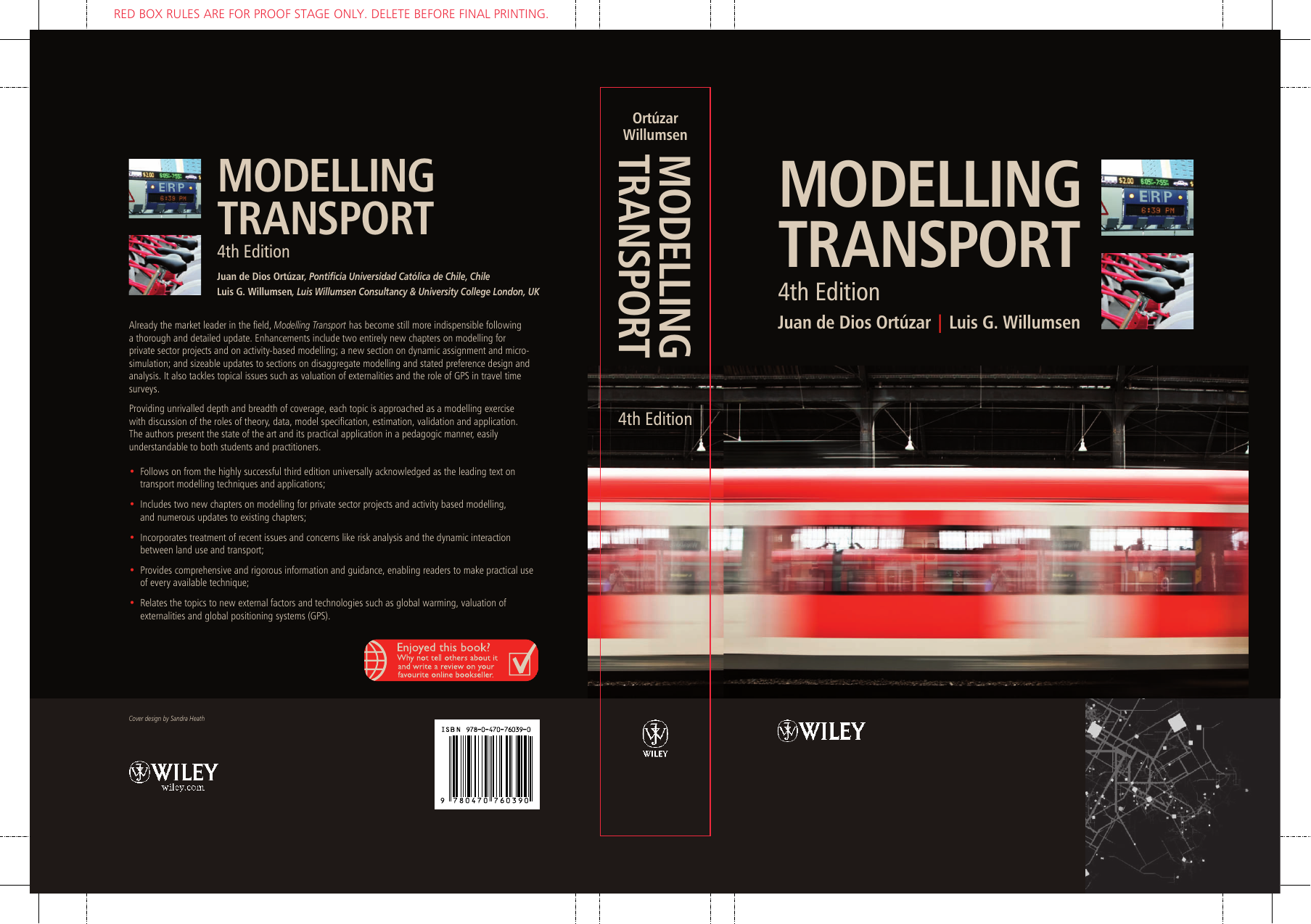

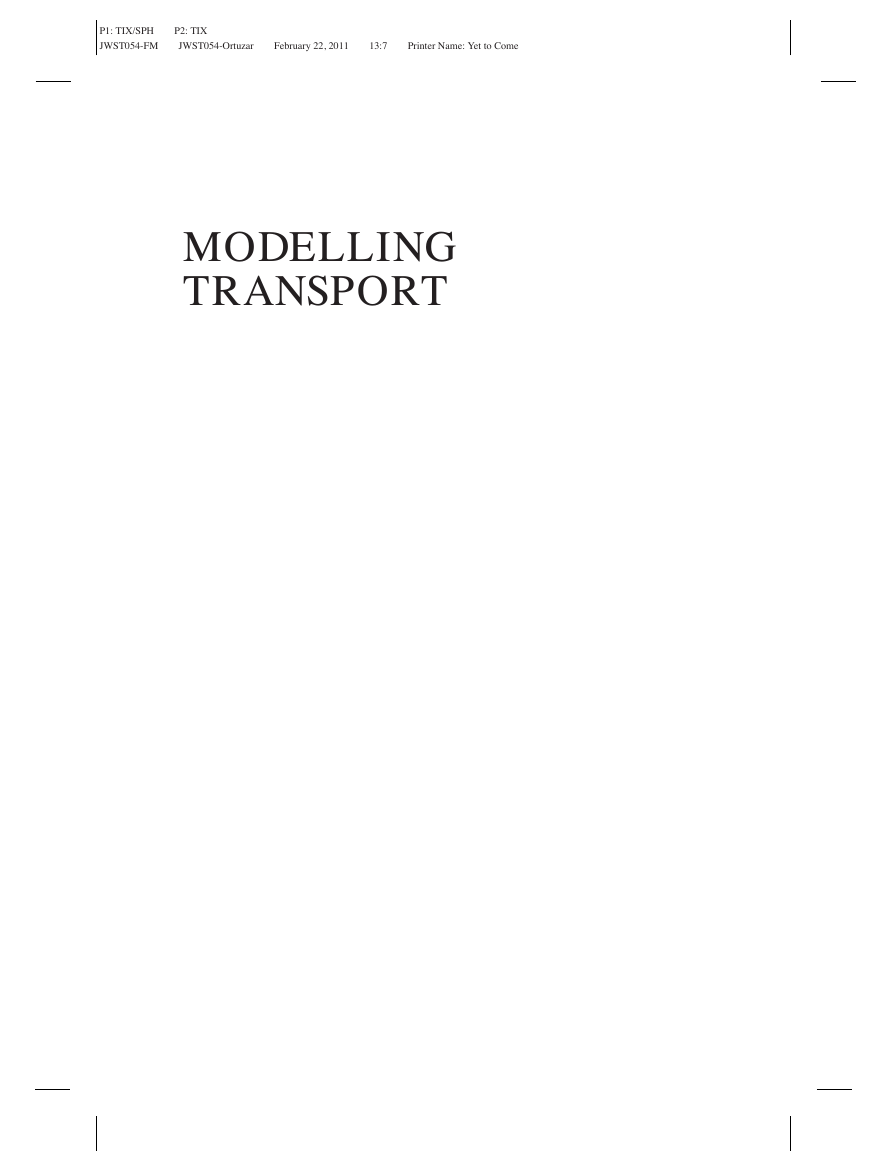

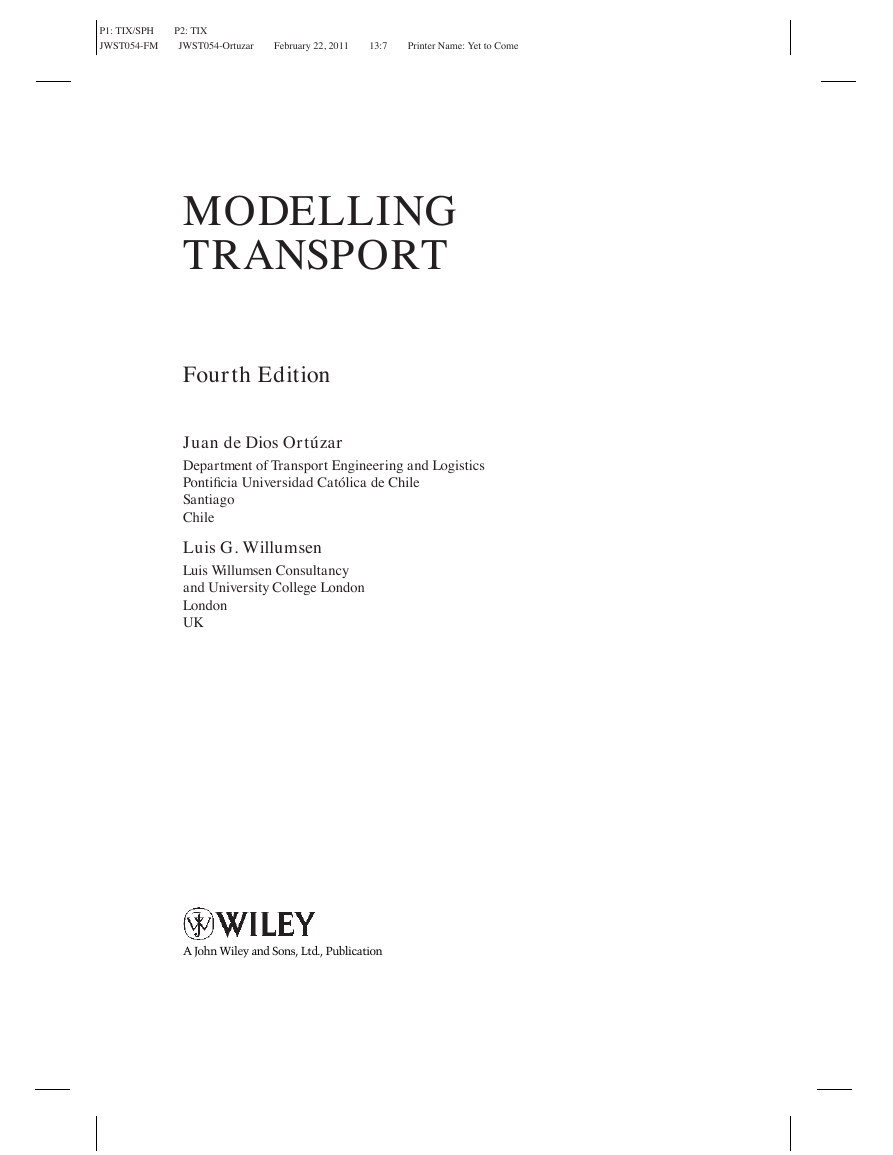
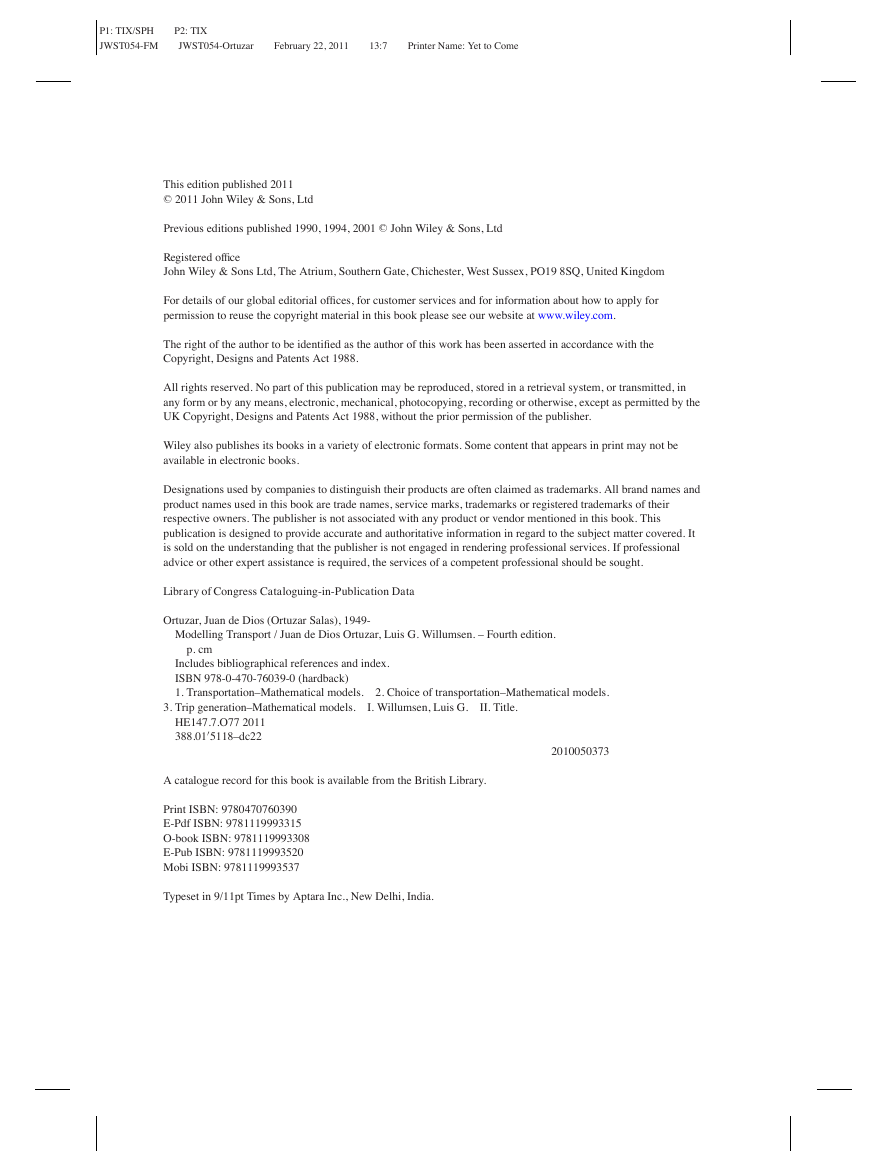
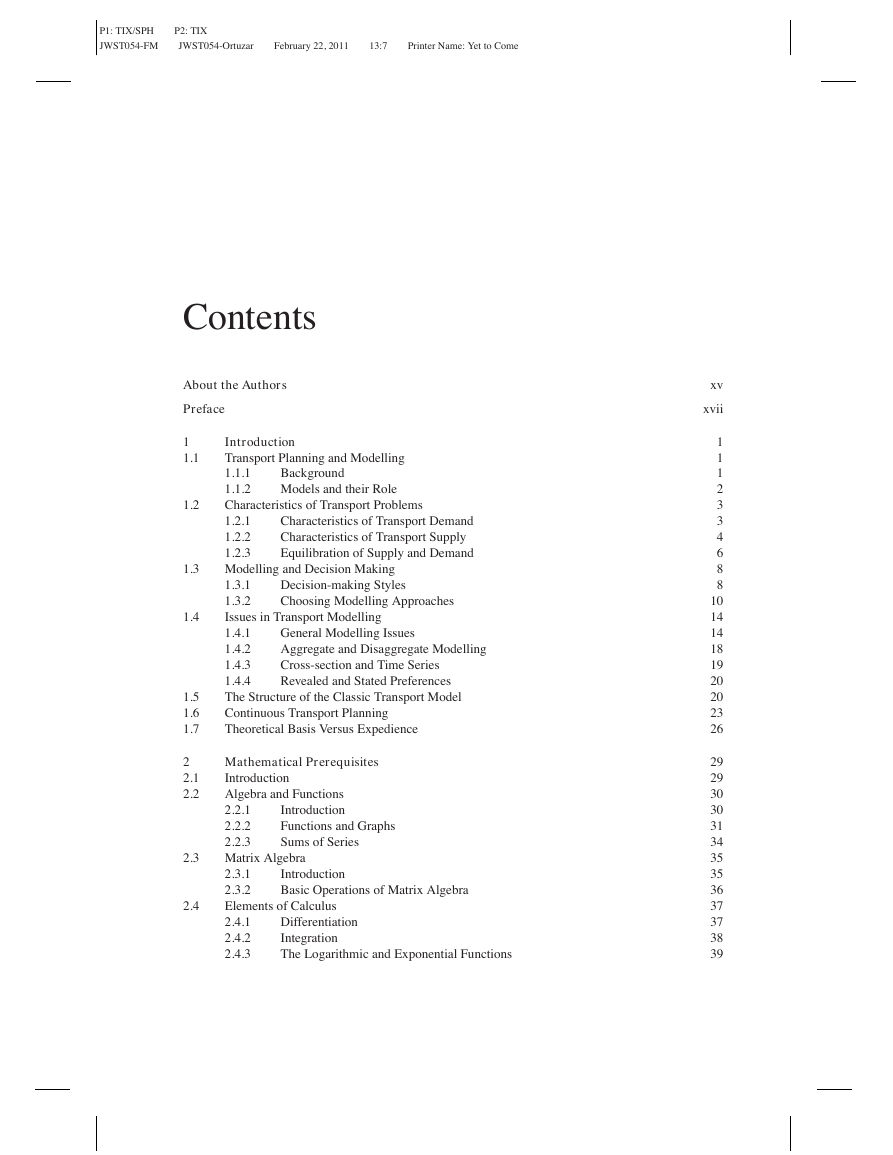
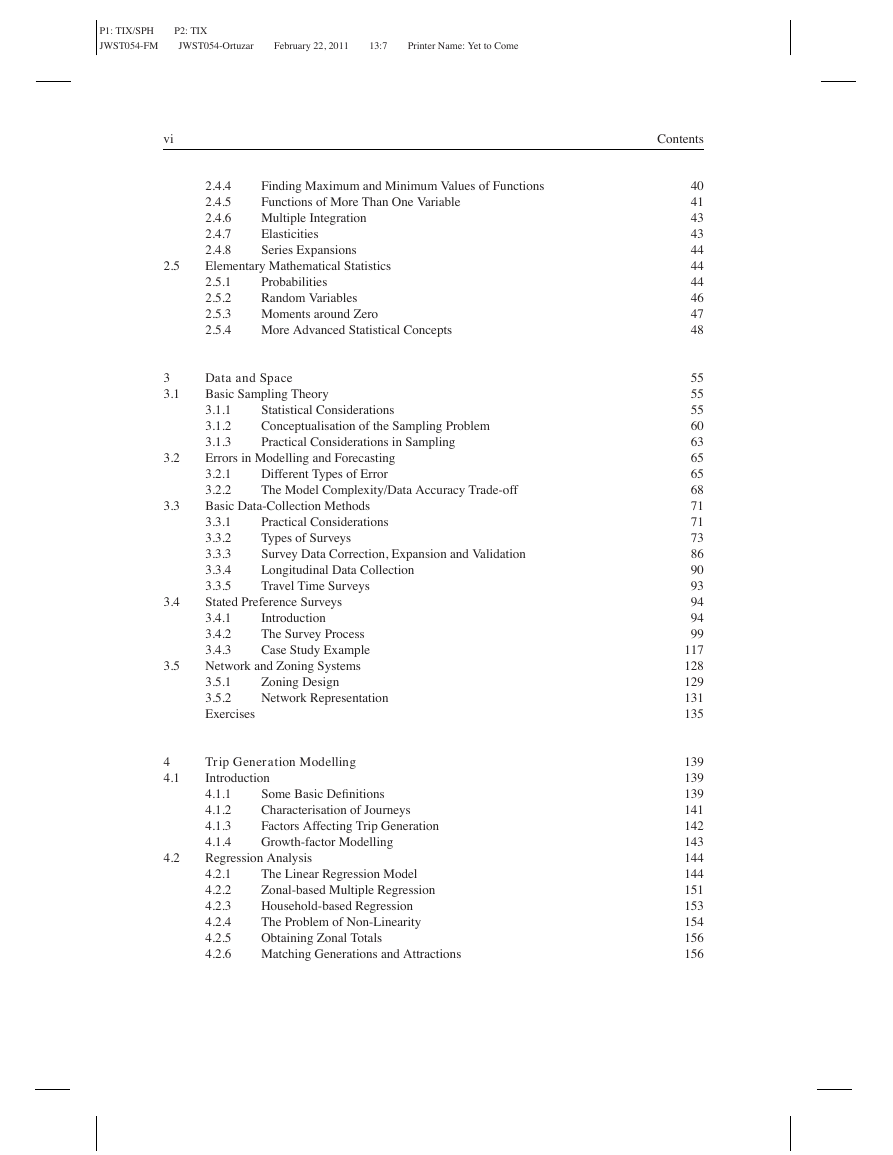








 2023年江西萍乡中考道德与法治真题及答案.doc
2023年江西萍乡中考道德与法治真题及答案.doc 2012年重庆南川中考生物真题及答案.doc
2012年重庆南川中考生物真题及答案.doc 2013年江西师范大学地理学综合及文艺理论基础考研真题.doc
2013年江西师范大学地理学综合及文艺理论基础考研真题.doc 2020年四川甘孜小升初语文真题及答案I卷.doc
2020年四川甘孜小升初语文真题及答案I卷.doc 2020年注册岩土工程师专业基础考试真题及答案.doc
2020年注册岩土工程师专业基础考试真题及答案.doc 2023-2024学年福建省厦门市九年级上学期数学月考试题及答案.doc
2023-2024学年福建省厦门市九年级上学期数学月考试题及答案.doc 2021-2022学年辽宁省沈阳市大东区九年级上学期语文期末试题及答案.doc
2021-2022学年辽宁省沈阳市大东区九年级上学期语文期末试题及答案.doc 2022-2023学年北京东城区初三第一学期物理期末试卷及答案.doc
2022-2023学年北京东城区初三第一学期物理期末试卷及答案.doc 2018上半年江西教师资格初中地理学科知识与教学能力真题及答案.doc
2018上半年江西教师资格初中地理学科知识与教学能力真题及答案.doc 2012年河北国家公务员申论考试真题及答案-省级.doc
2012年河北国家公务员申论考试真题及答案-省级.doc 2020-2021学年江苏省扬州市江都区邵樊片九年级上学期数学第一次质量检测试题及答案.doc
2020-2021学年江苏省扬州市江都区邵樊片九年级上学期数学第一次质量检测试题及答案.doc 2022下半年黑龙江教师资格证中学综合素质真题及答案.doc
2022下半年黑龙江教师资格证中学综合素质真题及答案.doc